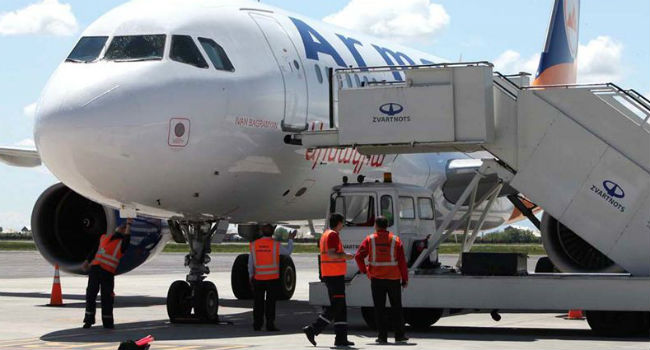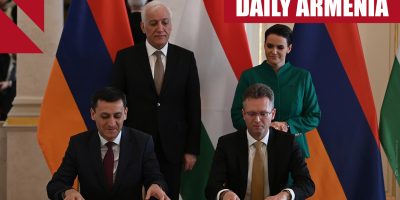Artyom Movsesyan, the General Director of Armenia’s Civil Aviation Agency, presented a discussion paper on “Liberalization of Armenia’s Air Transport” at the June 6 government session. He said liberalization of the air transport sector will take place gradually, and the state will no longer be obliged to assume liability for air carriers.
According to Movsesyan, there are three development options: have a national air carrier, or one which is partially funded by the state; implement a liberalized “Open Sky” policy; or adopt a policy of incremental liberalization. The government has expressed interest in the third option. Although a national carrier partially funded by the government is preferable for reasons of national security, it also has its shortcomings, including negative impact on potential competition within the sector, and certain risks for the state budget.
Movsesyan explained that the liberalization policy is geared to ensuring competition in the civil aviation sector. In his words, the government must try its best to create a competitive environment by including all Armenian air carriers in civil aviation who have expressed a desire to participate in the process. At the same time, in order to avoid any future bailout should the need arise, the executive must not assume any responsibility for the airline companies.
The phased liberalization of air transport over the next month implies announcing a tender for operating permits to ensure competitiveness. Only Armenian airline carriers will be allowed to participate in the competition. “Certainly foreign airline carriers can have a share in those Armenian airline companies, but the condition is that the controlling interest of the shares must be given to Armenian residents,” said Movsesyan, adding that there are 10 companies licensed to operate airplanes in Armenia.
Movsesyan said that to ensure that air transport from the country was not interrupted following the termination of Armavia’s operations, foreign air carriers were granted permits to operate flights, although only for the summer season. This means that those Armenian air carriers who win the tender for operating licences will be able to operate flights starting in the fall. Permits will be granted for a period of five years, in order to ensure airline companies recoup their investments. Several companies will be allowed to operate flights to the same destination.
In 2003, the country’s national carrier, Armavia, was granted exclusivity rights for a period of 10 years. When asked how detrimental these exclusivity rights were to the development of the airline industry, Movsesyan said that it is difficult to determine the monetary damage, but serious problems in the sector began after 2009. Up until that point, Armavia had diversified its flight destinations, securing 40 percent of all air transport from the country. When the company ceased operations this year, it had only a 15 percent share of the market. «That is why there weren’t any major shocks when the company shut down,» Movsesyan noted. Armavia has still not yet officially filed for bankruptcy.
Armavia’s debts in Armenia alone are more than US$100 million. According to Central Bank of Armenia statistics, loans to the airline industry by Armenian banks as of the end of March are around US$42 million. Armavia’s debt to Zvartnots International Airport is more than US$5 million, and in addition, the airline company owes about 21.5 billion AMD to the state budget for arrears in Air Tax, 16 billion AMD of which are penalties and fines. The total amount owed to the state budget is 24.3 billion AMD.
The Large Taxpayers Inspectorate of the State Revenue Commission (SRC) has filed suit to demand 7 billion AMD from Armavia. But even if the SRC wins that court case, Armavia will not be able to repay that amount. The company’s fleet, consisting of one Airbus and three Bombardier CRJs, has been grounded and impounded by the banks against the outstanding loans.
Armenak Chatinyan
















